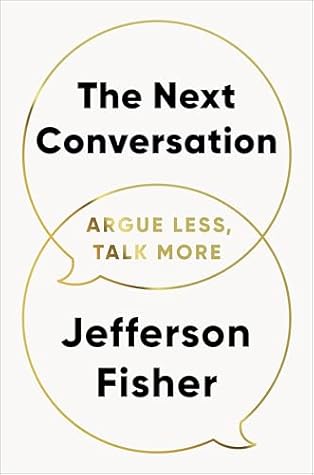More on this book
Community
Kindle Notes & Highlights
Read between
March 22 - April 14, 2025
Whatever context you find yourself in, I’ve created three rules that will build the connection for you: Say it with control. Say it with confidence. Say it to connect.
Anytime someone takes a level one conversation and jumps it up to level ten, it’s telling. And what it tells you is that there’s another conversation happening inside that person’s head that you weren’t invited to. Something hidden has taken over their filter and is now driving their reactions. You’re only seeing the tip of the iceberg.
When you tell someone that they’re wrong, they become more convinced that they’re right. When someone says they’re fine, they’re often anything but. It’s never
The person you see isn’t the person you’re talking to.
The fastest way to lose your peace of mind is to give someone a piece of yours. Beating out someone in an argument may feed your ego, but it’ll still leave you hungry. Rarely, if ever, does winning in communication lead to better things in your life. That’s why I care enough about you to tell you the truth:
At the most basic level, your goals for every conversation should align with this mindset:
Have something to learn, not something to prove.
Values in conversations serve as your compass, ensuring that your goals set the direction of what you truly find important, fulfilling, and meaningful. No matter the terrain of the subject up for discussion, your values always point you to true north. Rather than putting emphasis on the other person, your conversational values answer the question, “How will I show up for myself?” That is, who do you want to be seen as after the conversation ends?
What triggers you teaches you—if you’re willing to learn. Inside every argument is an ignition phase and a cooling phase. The ignition phase engages the signs of fight-or-flight, like saying something to hurt someone or abruptly leaving the room. The cooling phase begins when the temperature of the conflict lowers, like reaching understanding or adding distance between you and the other person. There are two main triggers to know: physical and psychological. These triggers arrive through actual or perceived threats to your body that activate ignition. Understanding what triggers are unique to
...more
Your first word is your breath. Your first thought is a quick scan. Your first conversation is a small talk.
Here’s how to take a conversational breath: Breathe in slowly through your nose for two seconds. At the top of the inhale, take another quick inhale through the nose for one second. The inhale count is now three. Breathe out through your nose for six seconds, making sure that your exhale is twice as long as your inhale. Repeat the exercise at least twice, or as needed throughout the dialogue.


